Forget Pumpkin Spice: This Is the Autumn Sangria You’ll Actually Want to Drink
That Feeling When the First Crisp Autumn Air Hits
I’ve mixed drinks at countless parties and gatherings, and you can practically tell what month it is just by looking at the cocktail menu. Summer is all about those light, zesty drinks that scream sunshine. But the moment the air gets that cool, crisp edge, everything changes. We start craving warmth, spice, and flavors with a bit more depth. And honestly, nothing captures that feeling better than a really, really good fall sangria.
In this article
I learned this the hard way. My first time making a big batch of fall sangria was for an outdoor event, and let’s just say it was… a learning experience. I basically tossed some apples, a bottle of cheap red wine, and a few cinnamon sticks into a dispenser and hoped for the best. The result? It was drinkable, I guess, but totally forgettable. The flavors were muddled and flat, like sad, boozy fruit soup.
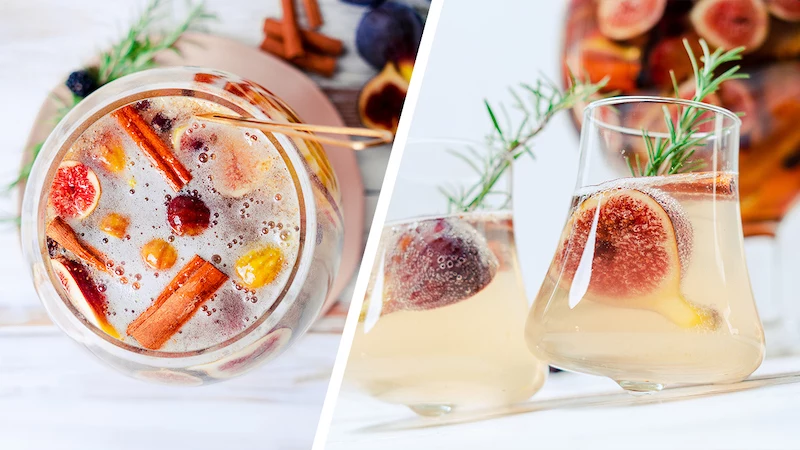
That flop taught me something important: Great sangria isn’t just a random cocktail you throw together. It’s a craft. It’s about understanding how to build layers of flavor. This guide is basically the result of all my experiments since then. We’re going to skip the boring ingredient list and get right into the techniques the pros use to make a balanced, delicious sangria every single time.
What’s Actually Happening Inside That Pitcher?
The secret to leveling up your sangria game is knowing why you’re doing what you’re doing. It’s not magic; it’s just a little bit of food science. Once you get it, you’ll go from guessing to creating with intention.
The Magic of Maceration (It’s Easier Than It Sounds)
Okay, the most important word to know here is maceration. All it means is soaking fruit in liquid—in this case, alcohol and a sweetener—to pull out all its flavor. The alcohol is a solvent, meaning it breaks down the fruit’s cell walls, releasing its juices and essential oils into the mix.
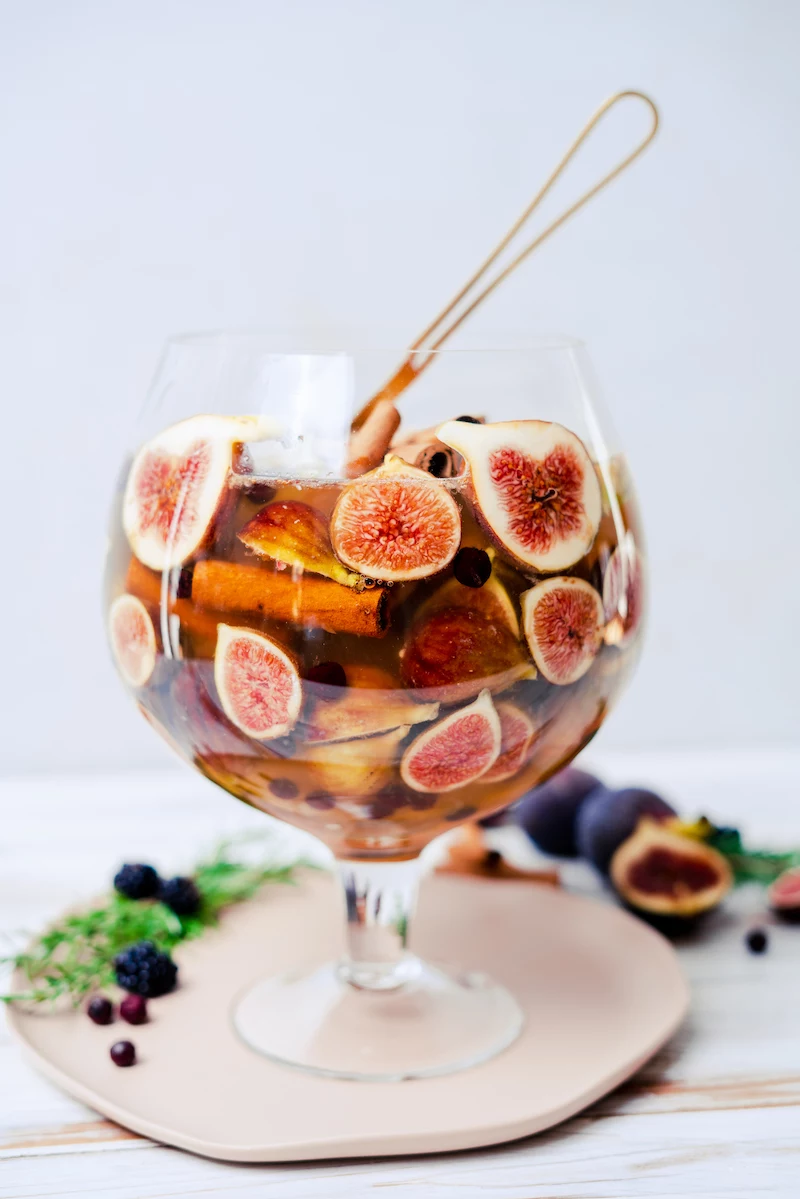
Sugar is the other key player. Through osmosis (flashback to high school science!), sugar actually draws moisture and flavor out of the fruit, concentrating it. This is why the first step is always to toss the fruit with liqueur and a sweetener before adding the wine. Letting it sit for just 30 minutes kickstarts this whole process, creating a rich, fruity syrup at the bottom of your pitcher. That syrup is the flavor foundation for the entire drink.
Why You Can’t Rush Perfection
Flavor needs time to mingle. After you add the wine, the sangria has to chill out—literally. Chilling does two things for you. First, it stops any wild yeast on the fruit from starting a fermentation party. We’re making infused wine, not hooch. Second, it gives all those different flavors the time they need to merge and mellow out. The sharp bite of the alcohol softens, the spices slowly release their warmth, and the fruit notes become deep and integrated.
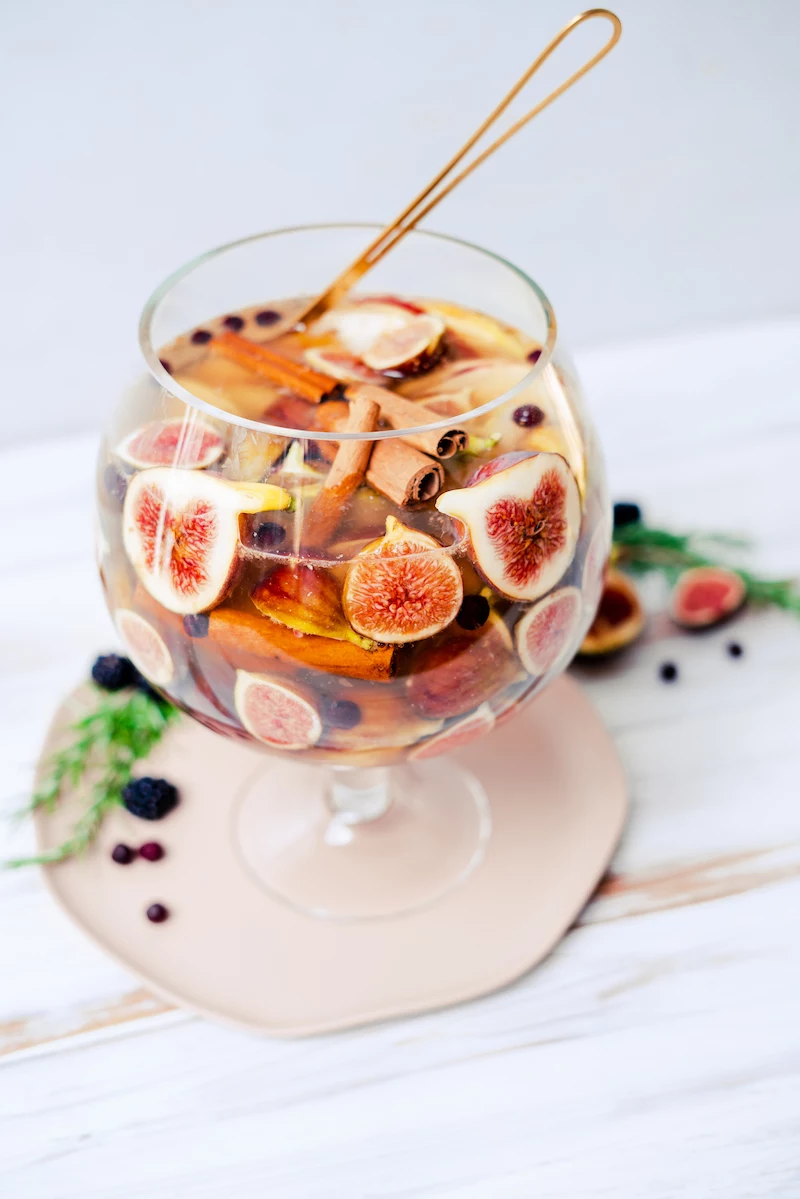
Here’s a non-negotiable rule I live by: No sangria gets served unless it has rested for at least four hours. But for the absolute best results? Let it sit overnight, anywhere from 12 to 24 hours. A sangria made an hour before serving just tastes like cold wine with fruit floating in it. An overnight sangria is a whole new, beautifully unified drink. The difference is night and day.
Choosing Your Ingredients Like a Pro
The quality of your sangria comes down to the quality of your ingredients. This doesn’t mean you need to break the bank, but it does mean choosing the right stuff. Let’s break it down.
The Best White Wine for the Job
For a fall sangria loaded with apples and pears, I almost always reach for a white wine. It provides a crisp, clean backdrop that lets the fruit and spices be the stars of the show. A heavy, oaky red would just steamroll over those delicate flavors.
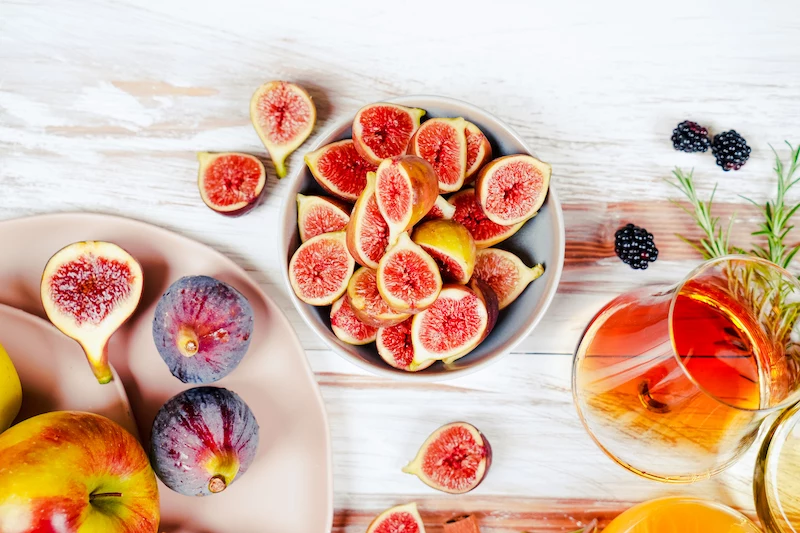
You want to look for a dry, crisp, and unoaked white wine. Here are my go-to choices:
- Sauvignon Blanc: It’s got these bright citrus and herbal notes that are just fantastic with fresh fruit. It keeps things lively.
- Pinot Grigio: This is a great neutral option. It’s light, crisp, and plays well with others, letting the fruit and spice flavors dominate.
- Dry Riesling: A good dry Riesling often has notes of stone fruit and a wonderful acidity that works perfectly with apples and pears.
Heads up! You’ll want to avoid heavily oaked Chardonnay. Those buttery, vanilla flavors are great on their own, but they’ll clash with the fresh, spicy profile we’re building. Also, stay away from super-sweet wines like Moscato, unless you plan on skipping any other sweetener. The goal is always balance.
A quick note on price: You don’t need a $30 bottle of wine here. But please, step away from the absolute cheapest bottle on the shelf. A good rule of thumb is if you wouldn’t drink a glass of it by itself, don’t put it in your sangria. Something in the $10-$15 range is the sweet spot.

The Supporting Spirits: Liqueurs and Brandy
Adding a spirit does more than just up the booze content; it adds a concentrated layer of flavor and warmth. For an autumn vibe, you’ve got some great choices:
- Orange Liqueur: This is a classic for a reason. A splash of Cointreau or Grand Marnier adds a complex orange note that ties everything together. On a budget? A decent triple sec from the liquor store works just fine.
- Brandy: Brandy brings a wonderful warmth and a subtle dried-fruit character. For a fall theme, an apple brandy (like Calvados, if you’re feeling fancy) is an absolute knockout.
- Spiced Rum: If you really want to lean into those cozy spice notes, this is a great move. The vanilla and baking spice notes in the rum will beautifully amplify the cinnamon in the sangria.
The Heart of Autumn: Picking Your Fruit
The fruit is where the main flavor and visual appeal come from. Choose firm, ripe fruit that can hang out in a wine bath without turning into mush.
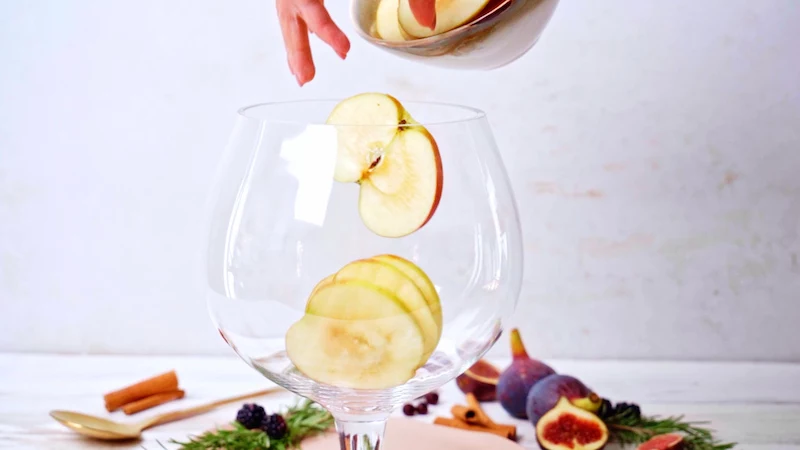
- Apples & Pears: You want crisp, flavorful varieties. For apples, a mix of red and green is great for color and taste—think Honeycrisp, Gala, or Granny Smith. For pears, Bosc and Anjou are fantastic because they hold their shape. Avoid super-ripe Bartlett pears; they can get mealy.
- Figs: Fresh figs are a game-changer. They add a jammy, luxurious sweetness. Look for ones that are soft but not mushy.
- Cranberries or Pomegranate Seeds: The original recipe mentions aronia berries, which are awesome but can be hard to find. A fantastic and easy-to-find substitute is a handful of fresh cranberries or pomegranate arils. They provide that same pop of tartness and a gorgeous, jewel-toned color.
By the way, I get asked this all the time: “Can I use frozen fruit?” For berries, cranberries, or pomegranate seeds, absolutely! It’s a great shortcut. But I’d steer clear of frozen apples, pears, or figs—they tend to get soggy and lose their texture when they thaw.
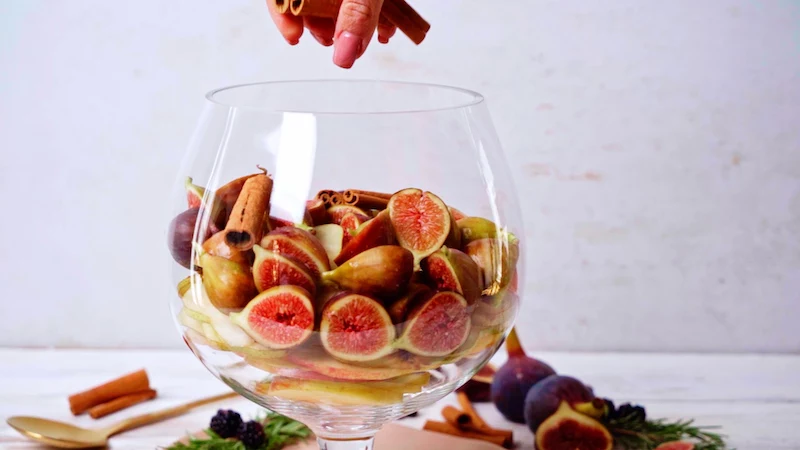
Spices & Sweeteners: The Final Touch
These are your finishing touches. Always use whole spices, not ground ones. Ground spices will make your sangria gritty and cloudy. A couple of cinnamon sticks are a must. For a little more complexity, you could toss in a star anise pod or a few whole cloves, but be gentle!
For sweeteners, maple syrup is a natural fit for a fall theme, adding a rich flavor that dissolves easily. Honey is great too, but it can be a pain to dissolve in cold liquid, so mix it with the liqueur first. The easiest option is a simple syrup (just equal parts sugar and hot water, stirred until dissolved), which gives you total control.
The Step-by-Step Method to Perfect Autumn Sangria
Alright, let’s put it all together. Follow these steps in order, and you’ll be golden. This recipe makes one standard pitcher, serving about 4-6 people.
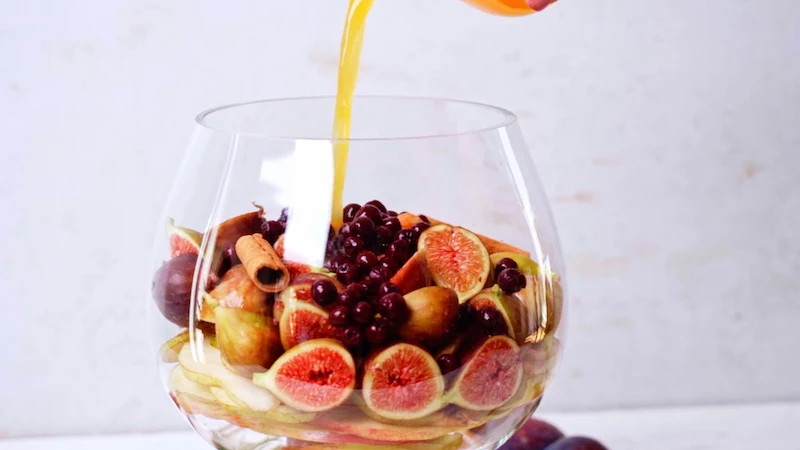
Quick Glance:
• Prep Time: About 20 minutes
• Chill Time: 4 hours minimum, 12-24 hours for best results
• Estimated Cost: You can pull this whole thing off for around $25-$35, which is a total steal for 6+ delicious cocktails!
What You’ll Need:
- 1 crisp green apple (like a Granny Smith)
- 1 crisp red apple (like a Honeycrisp)
- 1 firm pear (like a Bosc)
- About 6-8 fresh figs
- 1/4 cup fresh cranberries or pomegranate arils
- 1 orange
- 1/3 cup orange liqueur or apple brandy
- 1/4 cup maple syrup (or honey)
- 2-3 whole cinnamon sticks
- 1 bottle (750ml) of dry white wine, chilled
- 1 cup club soda or sparkling water, chilled (for serving)
Step 1: Prep That Fruit!
Wash all your fruit really well, even the orange. A lot of fruit has a waxy coating you don’t want in your drink. Pat everything dry. Core the apples and pear, and slice them up. Cut the stems off the figs and quarter them. Drop all the cut fruit into a large glass pitcher.

Step 2: The 30-Minute Flavor Soak
Juice the entire orange directly over the fruit in the pitcher. This adds acidity and stops the apples from browning. Now, pour in your liqueur (brandy or orange liqueur) and maple syrup. Give it a gentle stir to coat everything. Let this sit on the counter for at least 30 minutes. You’ll literally see a flavorful syrup pool at the bottom.
Step 3: Add the Wine and Spices
Pour the whole bottle of chilled white wine into the pitcher. Toss in your cinnamon sticks. Stir it all together, mixing that lovely syrup up into the wine.
Step 4: The All-Important Chill
Cover the pitcher and stick it in the fridge. Let it chill for at least 4 hours, but as I said, overnight is best. This is where the magic happens. Don’t rush it!
Quick Tip: In a Rush? If you only have an hour or two, slice your apples and pears paper-thin. More surface area means they’ll infuse their flavor much faster. Give them a gentle muddle with the liqueur to help things along.
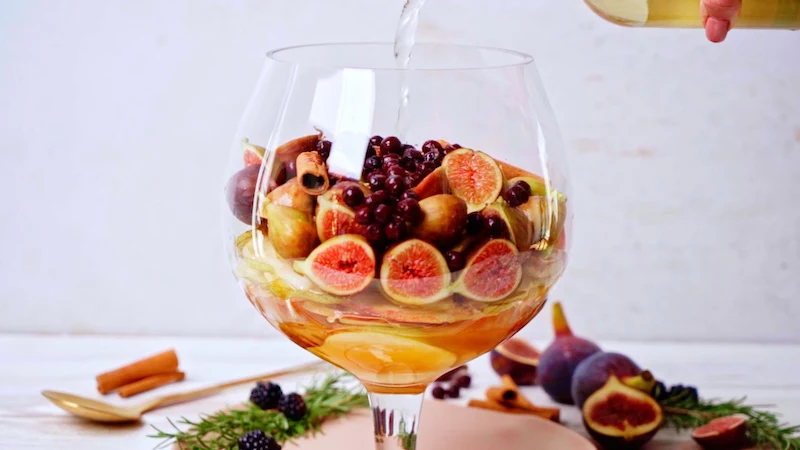
Step 5: Finish and Serve
Right before you’re ready to serve, give the sangria a final stir. Top it off with the chilled club soda or sparkling water. This adds a lovely fizz that lifts all the flavors. To serve, ladle some of the wine-soaked fruit into each glass and then pour the sangria over top.
Quick Fixes for Common Sangria Problems
Even with the best recipe, sometimes things need a little tweak. Here are a couple of common issues and how to fix them on the fly.
- Problem: It tastes a little too boozy or strong.
The Fix: Easy peasy. Just add a splash of plain apple cider or a bit more sparkling water to mellow it out. This adds volume without more alcohol. - Problem: The flavor feels a little flat or one-dimensional.
The Fix: It almost always needs more acid. Acidity makes flavors pop. Squeeze in the juice of half a lemon, stir, and taste again. It’s amazing what a little citrus can do.
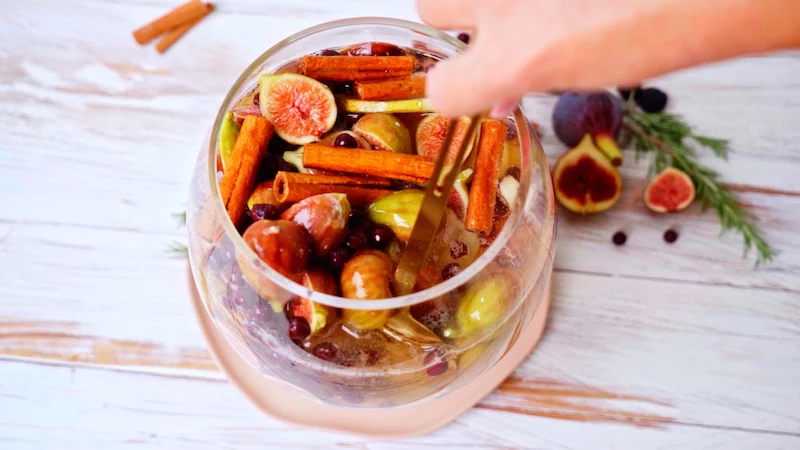
Making It Ahead & Other Pro Tips
Once you nail the basic method, you can start getting creative. Think of this as a template, not a strict set of rules.
Making it for a Party: This recipe scales up perfectly. The key is the ratio: for every bottle of wine, use about 1/2 cup of liqueur and 3-4 cups of fruit. And yes, you can absolutely make this ahead! You can mix everything (except the club soda) up to 48 hours in advance and keep it in the fridge. The flavors will be even better.
The Non-Alcoholic Version: It’s always a classy move to have a non-alcoholic option. Just replace the wine with a mix of white grape juice and unsweetened apple cider, and skip the liqueur. Let it infuse with the fruit and spices just like the real thing, and top it with sparkling cider or ginger ale before serving.
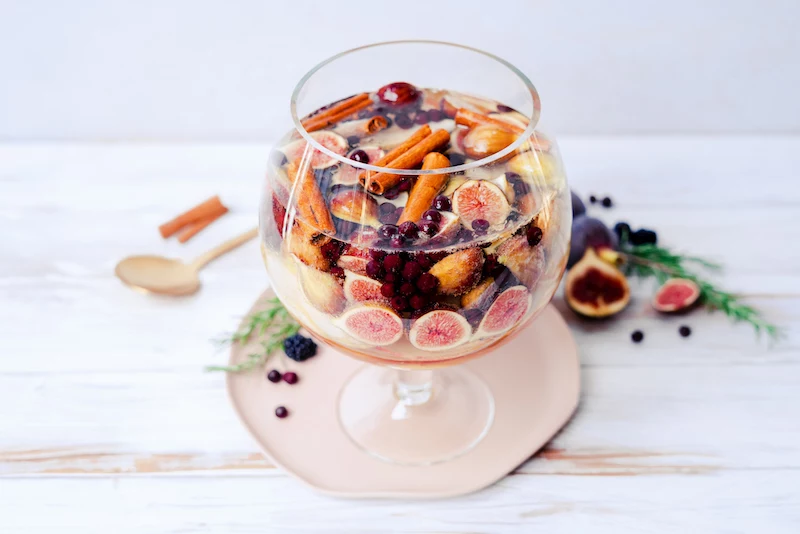
Oh, and one last thing… don’t throw away that boozy fruit at the bottom! It’s a delicious treat. I always set it out in a bowl with small forks for guests. It’s also absolutely incredible spooned over a scoop of vanilla ice cream. Just give your guests a heads-up that it’s pretty potent!
At the end of the day, making a great fall sangria is about connecting with the season and sharing something wonderful with people you care about. Trust your taste, have fun with it, and enjoy the process of crafting something delicious.
Inspirational Gallery
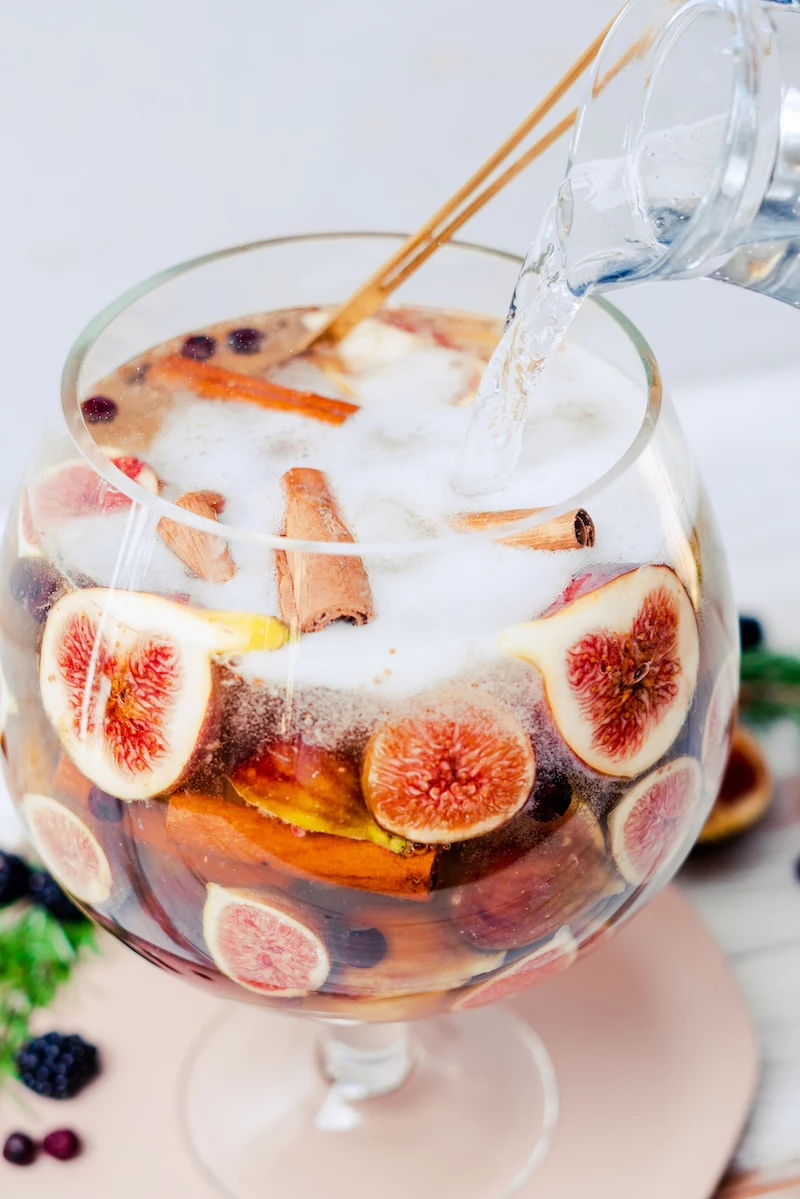
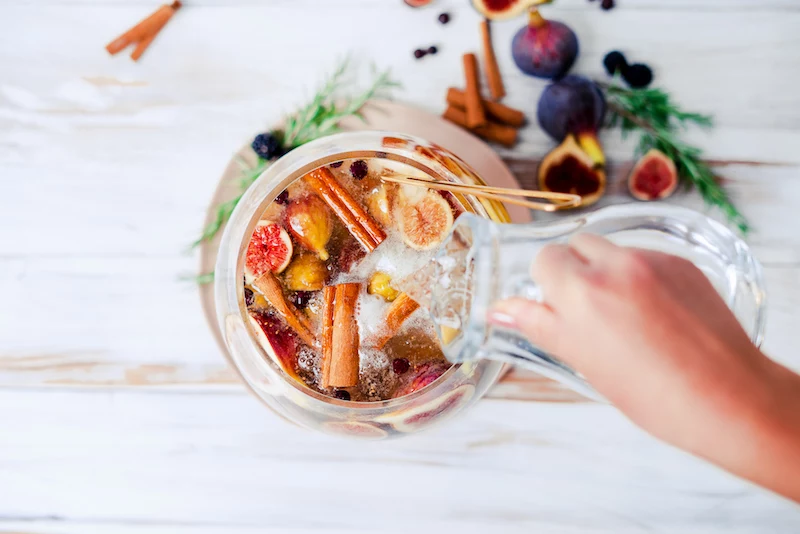
The Traditionalist: For that authentic Spanish feel, grab a bottle of Rioja, which is primarily made from the Tempranillo grape. It’s dry, with notes of cherry and a hint of leather that beautifully complements autumn spices like cinnamon and clove.
The Modern Twist: If you prefer a softer, fruit-forward profile, a Merlot or a Garnacha (Grenache) is a fantastic choice. They have lower tannins, meaning they won’t become bitter after macerating with fruit, and their juicy berry flavors are a perfect match for apples and pears.
Our verdict? You can’t go wrong with either, but for a guaranteed crowd-pleaser, the gentle fruitiness of Merlot is incredibly forgiving and delicious.
Ready to serve, but how do you get that perfect sparkle?
The biggest mistake is adding your bubbly element too early. Always top off the sangria just before serving, either in the pitcher or in individual glasses, to keep the fizz alive. For a neutral lift, use club soda. For a celebratory, boozier kick, a dry Prosecco like La Marca is a game-changer. But the secret weapon for an autumn sangria? A high-quality ginger ale. The extra spice from something like Fever-Tree Ginger Ale elevates the entire drink, bridging the gap between the fruit and the warm spices. A final garnish of a star anise pod or a fresh cranberry skewer makes it look as good as it tastes.










